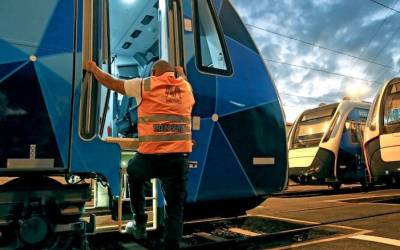Call 1800 641 743 for a free first interview. Ask about our No Win No Fee OR Expenses* fee policy.
Published: 20 June 2017
Author:
Ryan Carlisle Thomas
Clarity on TAC powers for injured in DLZ v TAC Case
Clarity given by Victorian Court of Appeal as to the extent of TAC’s powers to compensate catastrophically injured transport users
The Victorian Court of Appeal recently handed down judgment in a case that will have significant ramifications for those catastrophically injured in transport accidents. By catastrophically injured, we’re talking about people who have suffered quadriplegic and paraplegic injuries.
People who most unfortunately find themselves cast down a different path in life as the result of injuries that have been sustained in a transport accident can receive a vast range of benefits payable by the Transport Accident Commission (TAC). These range from the obvious medical and like expenses associated with their visits to doctors and specialists, to far more significant expenses associated with the purchasing and/or maintenance of life-saving equipment that is needed to treat their condition(s). TAC is only able to make payments in accordance with the Transport Accident Act 1986 (Vic), so there are limits on what they can and cannot make payments in respect of. This particular case has provided significant clarity on the extent of those powers.
What was the DLZ v TAC Case about?
The DLZ v TAC[1] case involved a 15-year-old boy who suffered catastrophic injuries when he was 12 years old, and was involved in an accident as a pillion passenger on a motorcycle. He is now a ventilator-dependent quadriplegic who is also dependant on a machine for the purposes of feeding. He is paralysed in all four limbs and is plainly unable to achieve any voluntary movement at all. He has no control over his bodily functions. As a result, he has (since the accident) been, and will continue to be, wholly dependent on equipment and carers for all activities of daily living. All of this while being fully alert and engaged, but unable to talk.
DLZ and his mother live in rented accommodation. As a result of his injuries, DLZ requires more substantial accommodation than was necessary before his accident, so as to accommodate himself, his mother, a carer, and the equipment necessary for his survival.
There was no dispute that as a result of DLZ’s injuries, he required more substantial accommodation than he and his mother shared pre-accident. Thankfully, there was no dispute from TAC on this particular point. However, the question in this case has always been whether the TAC has the liability (and if so what liability) to pay or contribute to the extra amounts paid by DLZ and his mother in rent for them both to live in larger premises than he would have otherwise required pre-accident.
History of the case
Prior to coming before the Victorian Court of Appeal, the matter had already been decided on by the Victorian Civil and Administrative Tribunal initially and had then been appealed to the Victorian Supreme Court. The judge that heard the appeal in the Supreme Court made mention in his judgment that “it [was] with regret that I have reached [the conclusion he did]. It is a truism that hard cases can make bad law. Equally, hard cases, such as these, highlight deficiencies in the law. The Plaintiff is appallingly disabled, through no fault of his own. It is most regrettable that the legislation, as currently formulated, does not provide to him relief in aspect of the additional accommodation expenses necessary for the purposes of the provision of equipment and care to him that is vital to his ongoing survival”.[2] It’s clear from His Honour’s comments that the effect of his own interpretation of the legislation is not a fair reflection of what the law ought to be. Thankfully, the solicitors representing DLZ appealed the matter further to the Victorian Court of Appeal.
How did the Victorian Court of Appeal see the case?
Much of the Court of Appeal’s considerations were about the definition in the Transport Accident Act 1986 (Vic) (as amended) in respect of a ‘medical service’. DLZ’s central argument was whether the rent associated with the additional accommodation required by him is capable of constituting the provision of something needed to ‘operate, run, maintain or repair’ life-saving and life-preserving equipment that falls within the definition of a ‘medical service’. The Court considered the equipment of the kind needed by DLZ, cannot simply be operated out in the open air; provision needs to be made for its care, storage and maintenance, and for the storage of necessary supplies. Ultimately, the Court considered that the extra space needed to house the essential equipment needed by DLZ, and his appeal succeeded.
What does this case mean for other sufferers?
While DLZ’s matter was remitted to the Victorian Civil and Administrative Tribunal for rehearing, the success of his Appeal is likely to have significant and positive ramifications for those unfortunate to find themselves in a similar position as DLZ. It was raised before the Court of Appeal the two following competing objects of the legislation:
- To reduce the cost to the Victorian community of compensation for transport accidents; and
- To provide, in the most socially and economically appropriate manner, suitable and just compensation in respect of persons injured or who die as a result of transport accidents.
While DLZ’s case was required to navigate the tension between these two competing objectives of the legislation, the Court of Appeal’s judgment in this particular case could be seen as placing more of an emphasis on what is ‘suitable and just’ in all of the circumstances. The result of DLZ’s case is what many may have thought the law is, and always has been. Thankfully following this significant decision, it now is.
It’s worth noting, as Their Honours did in the Court of Appeal,[3] the TAC made in clear to the Court that their essential position was not that they actively dispute the liability to make the payments, but rather only sought clarification from the Court of its powers to make the payments sought by DLZ despite their status as a respondent to the appeal.
If you have suffered personal injury, we encourage you to contact RCT on (03) 9238 7878 and we can make an introductory meeting to explore legal and potential compensation opportunities.
[1] [2017] VSCA 134.
[2] DLZ (by way of litigation guardian Iskra Nikolovski) v Transport Accident Commission, Kaye JA at [52].
[3] DLZ v TAC [2017] VSCA 134, [50].
Categories Court Case, Road injury, Serious Injury, Victoria, Legislation
Call 1800 641 743 to be connected to your nearest office, find an office near you on our office locations map, or email us using the form below and we will contact you on the same or next business day.
* Required Field



